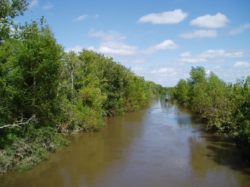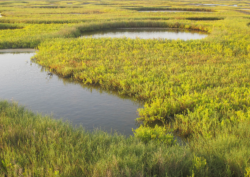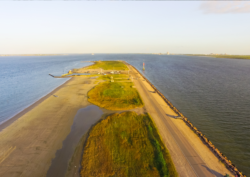

HARC provides in-depth water research analyses to policymakers, communities, and local governments. We emphasize the protection of watersheds, a holistic approach to water management, nature-based infrastructure solutions, and the importance of healthy coastal ecosystems.
View Water ResourcesScience-based analyses for resource planning are vital to clean, plentiful water in Texas. HARC’s water team provides knowledge and resources on watershed health from riparian corridors to reservoirs to bayous.

Protecting and maintaining critical infrastructure is vital to thriving communities. Innovative approaches to infrastructure, such as nature-based solutions, provide various co-benefits, such as providing flood mitigation, increasing recreation and tourism opportunities, reducing runoff, and improving water quality.

The Texas coast supports seven major and three minor bay systems, and the Gulf’s nearshore environment is one of the most productive and biologically rich ecological areas in the United States. The coastal habitats support diverse and dynamic communities of organisms in a temperate to tropical region and support our critical commercial and recreational fishing and tourism industries.
HARC’s science-based approach to coastal protection includes stakeholder-driven analysis and large-scale data investigations on coastal habitat and wildlife trends.
